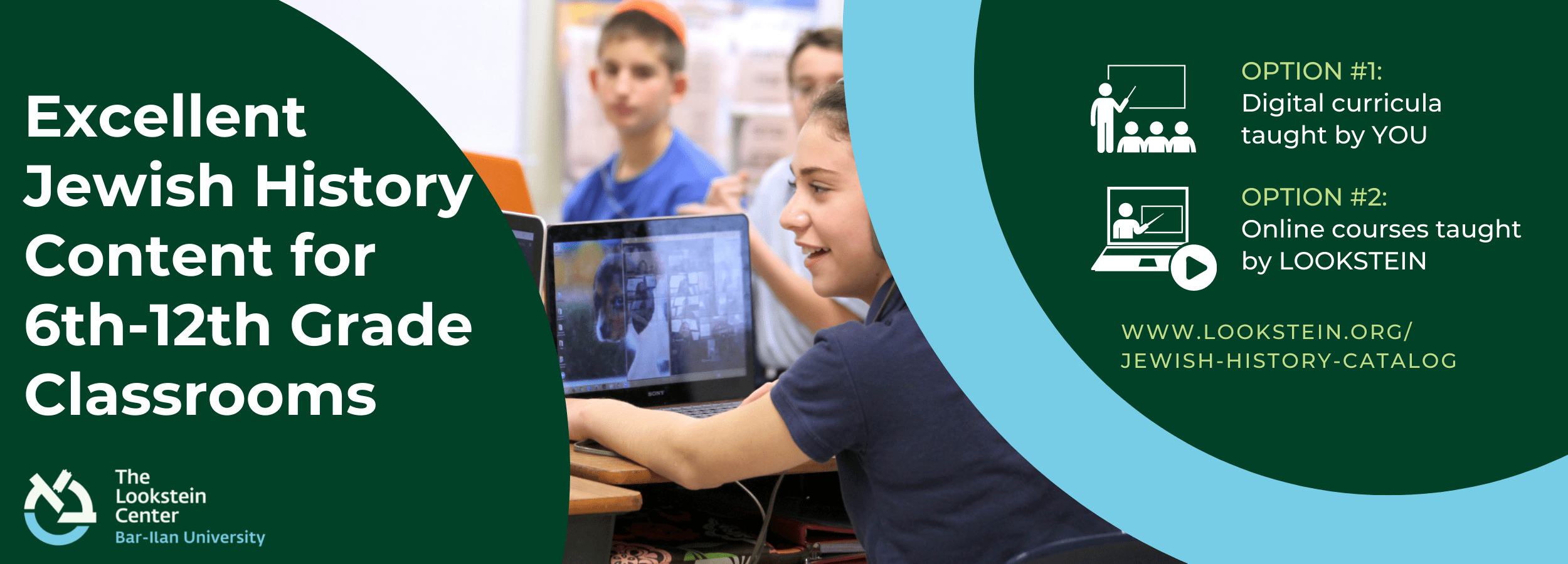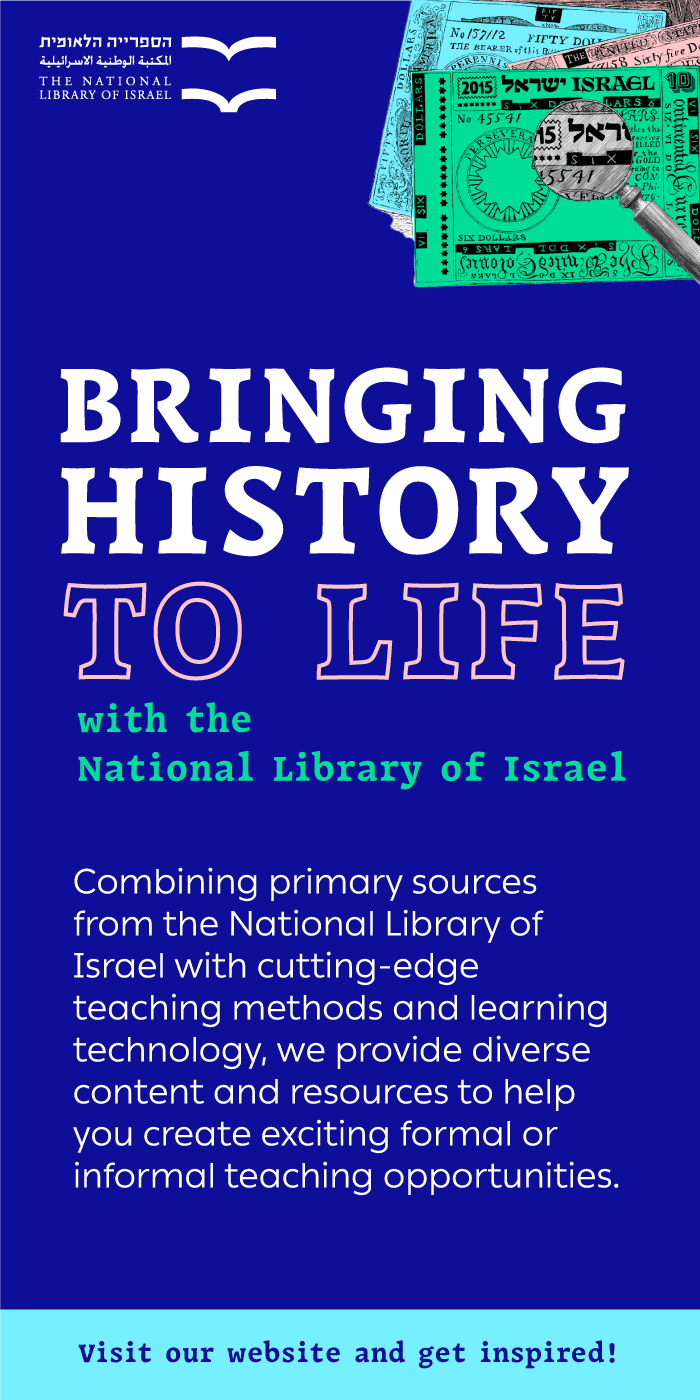Passover 2021 was approaching, as was another round of virtual learning for Jewish day schools. Even North American day schools meeting in person were scheduling online classes for some pre- and post-Passover days as a safety measure, allowing teachers and families to be with extended family for the first time in a year. Charles E. Smith Jewish Day School in Rockville, MD, aimed to maximize the virtual learning time and created an “innovation minimester” for their middle school. With a mix of synchronous sessions and blocks for independent work time, students selected and developed a project that explored a topic of their choice in a meaningful and substantive way. The self-selected project had four criteria: it had to benefit the student, their community, or the world; reflect Jewish values; stretch the student to strengthen skills and possibly develop new ones; and be innovative. The experience enabled students to envision and create a project that explored a topic in-depth and implement a plan for learning which included articulating challenges and finding solutions. Perhaps most importantly, students were asked to reflect on their learning, evaluating strengths and areas for growth. The school plans to continue the “innovation minimester” even when there is no longer a need for virtual instruction: “This is just the beginning. Next year we hope to incorporate site visits and service-learning.”
Around the country, over the course of the last year, day school educators had the chance to expand or initiate learning that increased student independence. Whether students learned to use a learning management system for the first time, took a Jewish studies online course through Lookstein Virtual Jewish Academy or the Online Jewish Studies Courses at VHS Learning, or utilized self-paced playlists, remote and concurrent learning (where a class is comprised of in-person and at-home students) called for less frontal instruction and more autonomous student learning.
At the Ottawa Jewish Community School, remote learning was an opportunity to build self-directed learners. Older students were more likely to be able to engage, search for help online, and find ways to “figure a task out.” The younger the learners were the more those skills needed to be developed. By creating class edublogs, students of all ages were able to access assignments independently. Additionally, each student in grade 4 and up developed their own online blog, which encouraged documenting, a student-centered framework that promotes looking for one’s own learning, capturing evidence of that learning, reflecting on that learning, and sharing the learning.
One Tanakh teacher at Ida Crown Jewish Academy in Chicago, IL, changed her regular mode of summative assessment and instead of giving a final exam with essays, asked the students to design five unique t-shirts for five characters they had studied over the year. In a written assignment, students had to describe a t-shirt that either symbolized the actual personality and the growth and evolution of the character or was the type of shirt the character would wear (explaining everything about what the t-shirt is, says, and looks like, and how it fits into the character’s personality, growth, and evolution over time). A clear rubric was provided, but the assignment called for individual interpretation rather than having a single right answer.
Even in early childhood settings, schools adjusted for the pandemic, and students rose to the occasion. At Hillel Torah Day School in Skokie, IL, the kindergarten developed a program in which each child received an iPad and learned the independent skills needed to function in a virtual classroom. Even when students were back in school, the class continued to use the iPads, which now were loaded with the SeeSaw app, allowing students to work individually and progress through content at their own level and pace. Students who missed school could keep up with classwork, increasing autonomy even among the youngest learners.
Student agency is about empowering the students within our classrooms to be decisive and involved in work that is relevant and meaningful to them. Students develop agency when given the capacity to act independently and to further their own growth, take ownership of their learning, and make decisions along the way to create a meaningful experience. Self-pacing (or asynchronous learning) increases student ownership while project-based learning provides motivation and opportunities for engagement, both enabling student agency. The learner becomes empowered to develop perseverance, resiliency, and self-efficacy that will stay with them long after their school days have passed.
How can schools successfully maintain, expand, and scale the many innovative, creative, and educationally powerful adaptations that occurred during the pandemic when COVID subsides? The key to maintaining important innovations and adaptations is to keep students front and center in the discussion about what worked and what did not work for them. As we begin to discuss the coming academic year, we need to design learning that focuses on the skills students will need and creates opportunities for showcasing the relevance of content to their lives.
Students can clearly tell us what they need in their educational experiences. Are we willing to listen to them?

Rachel Mohl Abrahams serves as the Senior Advisor for Education Grants and Programs at the Mayberg Foundation. Previously, Rachel served as a Senior Program Officer at The AVI CHAI Foundation where she specialized in Jewish education grant-making and day school initiatives. Rachel has been a champion for integrating personalized learning into Jewish education spaces.



